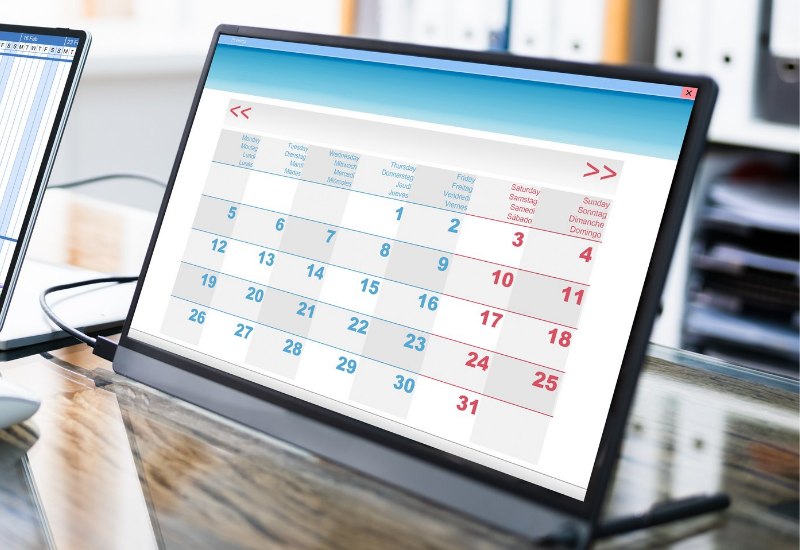Example: Small Group Instruction at LPS Richmond
In this audio clip, you will hear how an LPS teacher works with a small group of students on annotating fractions.
Transcript:
Teacher (Sophia Thomas): Hi, ladies.
Student: Hi.
Student: Hello.
Teacher: You know whenever you get back here, we do many things. One, I am checking on your understanding for things that you have self-reported that, yeah, I get it, based on what I'm seeing on your dashboard. Two, I want to deepen your understanding of the concept and skills that you're working on. Three, I want you to continue to add to your skills of what else can I use when I'm solving problems. When I hand this sheet to you, I'm going to give you a minute just to read the directions, just peruse the question. You're doing this silently and independently. And then, we're going to check in with each other to see if we understand the instructions for this test. Teacher: All right. Pencils down. Go ahead and check in with each other in terms of the instructions. What is the question asking you to do? Do you need clarifying? Student: I don't understand how it's saying that they wrote the number two-thirds as one-half and one-sixth. We often think of two-thirds as one-third plus one-third because ancient Egyptians would not write it this way. What is this thing?
Teacher: Does anybody else need clarification? We're good. So, I'm going to give you another two minutes. Now that you have read the instructions I need you to go through the question one more time and you're going to annotate this time. You're also going to try to make connections with what you already know about fractions or a prediction as to how you are going to solve just part A of this problem. That means you're going to read the question all the way down to part A. You will annotate as you go through. What are the important ideas? What connections can I make about what I already know about fractions? What prediction can I make? What strategy will I possibly use and so on? We're doing this for two minutes independently and silently. Then we're going to check in. We're just going to share what we annotated and possibly why. And then, any predictions you have or could make or any questions that you had as you read through the entire thing from start to the end of part A. Let's start with you, Fatima.
Student: I didn't get these, how they got to that conclusion.
Teacher: You're not sure how two-thirds is equal to one-half plus one-sixth. Could you make any prediction? Was there anything that you could make a connection to?
Student: In my head, I thought they divided these and they just added these.
Teacher: Gabby, what did you annotate and why? What connections could you make, if any? What questions do you have or predictions?
Student: I annotated that as fraction. We usually use the same fractions but they used two different fractions and different numbers.
Teacher: When you say different numbers are you talking about the numerator or the denominator?
Student: The denominator. And then, to get the answer I used the common multiples.
Student: I agree with Fatima. I didn't really understand this. But I'm pretty sure they got to that by dividing. I annotated that to add or subtract a fraction you need to have the same denominator.
Teacher: You made that connection because you noticed there was some addition and how they were set up. Alandra.
Student: I annotated that in this explanation that this instruction says the ancient Egyptians, instead of using two-thirds, they used one-half plus one –
Teacher: [Unintelligible]
Student: I annotated that the ancient – right here in the instructions it says the ancient Egyptians used one-half plus one-sixth. We use two-thirds. Right here it's saying that we use one-third plus one-third, like two fractions. They say the ancient Egyptians, they use two fractions.
Teacher: They wouldn't use the same denominator twice. They wouldn't use the same fraction twice, right?
Student: Yeah. It's like saying the opposite.
Teacher: Laney.
Student: The connection thing I get. I'm confused about how they got two-thirds.
Teacher: What do you notice? What connection do you make? And then, maybe you can make that connection as how you think they're getting two-thirds.
Student: I noticed that they were using this diagram to get two-thirds. When I was looking at how they did one-half from one-sixth and one and one-half and then one-sixth is right here which made two and two over three. That's how I understood that. I annotated a single fraction which is adding all of them and getting a number.
Teacher: In essence, what does the first part of the problem really say to us? What is it actually saying?
Student: We use the same fraction and they use two fractions.
Teacher: What kind of fractions are they using?
Student: They're using – like you say, you did not include the figure so I was confused because they wouldn't use fractions with the same denominator. But they would use fractions with unlike denominators.
Teacher: What are they called?
Student: Unit fractions.
Teacher: I wonder why they're called unit fractions. Any idea? Is there anything you observed that could –
Student: The little units right there.
Teacher: What units?
Student: The little things right there.
Teacher: Look at the pattern at the bottom here. What do you notice?
Student: The denominators are not the same.
Teacher: What's the same?
Student: The numerators.
Teacher: And the numerators are all what?
Student: One.
Teacher: One. So, that's possibly why they're called unit fractions. This was their strategy for breaking apart fractions or adding fractions together. Now, your task before we get to the whole business of solving part A – so your job right now is you're going to focus on part A of this question. You are creating a plan. You want to figure out what do each of these fractions actually represent? How can you do that? On the back of the sheet you're going to create a plan. What's the first thing –
Student: What do you mean represent?
Teacher: Just like how they told us that two-thirds is the same as one-half plus one-sixth, we want to figure out what single fraction is this. On the back, you are going to create a plan in this space. What's the first thing you're going to do? What do you know that's going to help? What strategy are you using that will allow you to arrive at your solution? I'm going to give you about three to four minutes just to create the plan, if you can go ahead and solve in that time.
Explore More

Increasing Student Buy-In with Targeted Communications (NYC SWOW)
Through their participation in TLA's Strategy Lab: Virtual & Hybrid program, NYC School Without Walls designed and piloted a program that...

Early College Credit
High schools can offer early college credit and dual enrollment to students to give them a head start on their post-secondary pathway.

Flexible Scheduling for Virtual and Hybrid Learning
Virtual and hybrid schools can offer flexibility in scheduling for students to decide what will best meet their needs, learning...